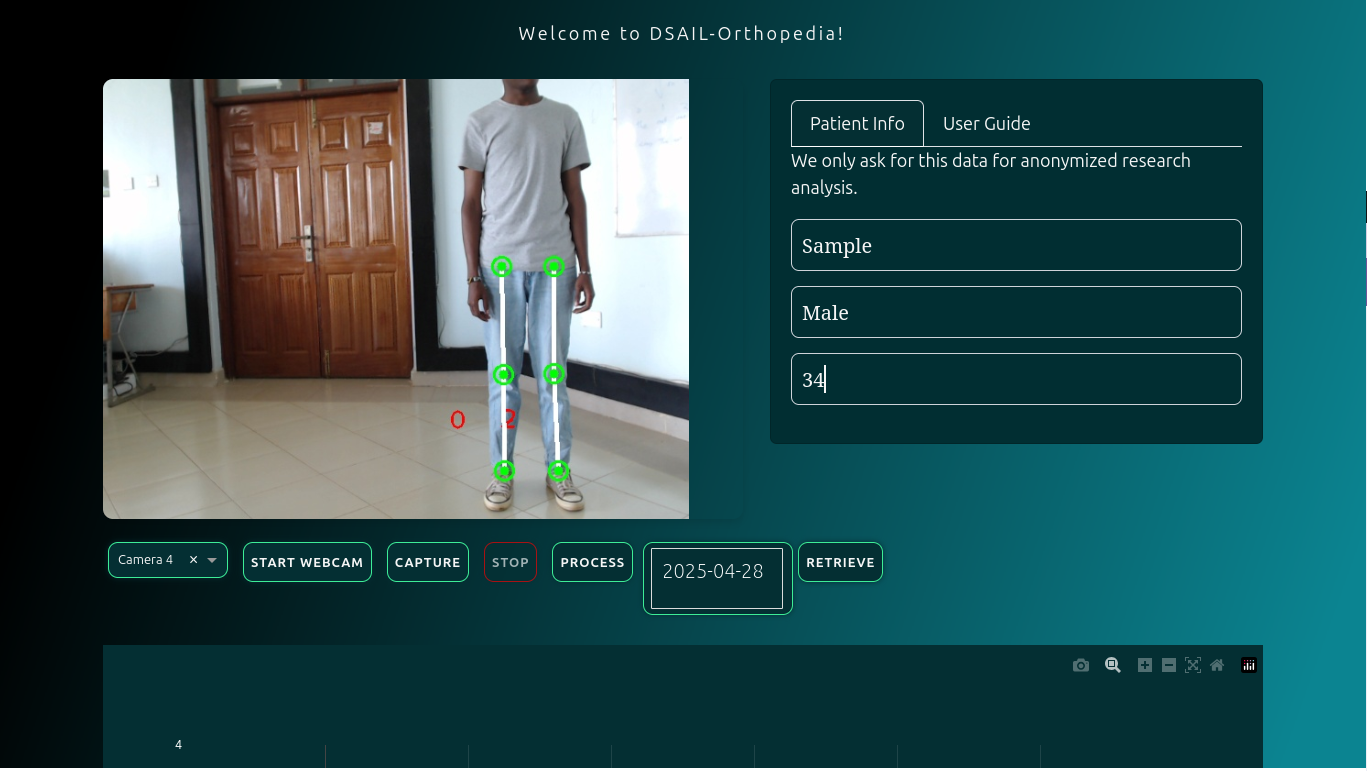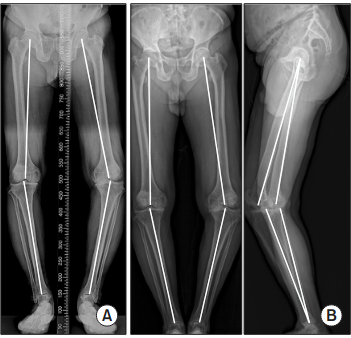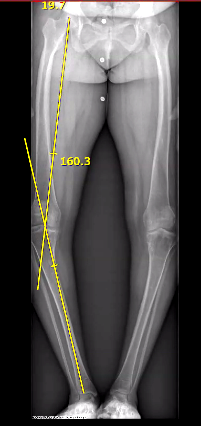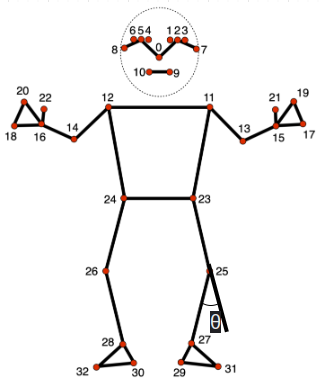DSAIL ORTHOPEDIA

Background
Accurate assessment of lower limb alignment is crucial for diagnosing and treating musculoskeletal conditions. It helps identify any misalignment in the natural positioning of the hip joint, knee, and ankle by calculating HKA angle (Hip knee Ankle angle). This is especially important when evaluating a patient's recovery after major surgical procedures such as total knee or hip replacement, which can significantly affect posture and gait. Such misalignments may impair a person’s ability to walk properly, as the body can no longer evenly support their weight.
Traditional assessment methods, such as full-length X-rays, though reliable, expose patients to radiation and require specialized equipment. This makes them less practical for frequent evaluations or in remote healthcare facilities that have limited resources.

Fig. 1: Radiographic imaging of the hip-knee-ankle angle on conventional scanograms (A) and in EOS (B)
To overcome these limitations, we developed DSAIL-Orthopedia—a computer vision-based web application that uses human pose estimation model to provide real-time, automated measurements of limb alignment. This approach allows for more frequent assessments, eliminates the need for radiographic imaging, and significantly reduces the time required to access care.


The software uses a top-down approach for human pose estimation. It can retrieve previously stored information from the database as well as capture new records. The user is instructed to stand 3 meters away from the camera, after which frames are captured. The person is detected in each frame, and keypoints on the body are estimated. The Hip-Knee-Ankle (HKA) angle is then calculated for that specific frame and saved in the database. This process continues for the successive frames in the video.Additionally, patient records are stored digitally, making it easier to track and evaluate recovery over time.

Accomplishments
So far, we have developed a tool for lower limb assessment with an optimized software pipeline and a refreshed user interface. We are currently validating the tool in collaboration with Aga Khan University Hospital to ascertain clinical viability.
Acknowledgement
I sincerely thank Aga Khan University Hospital for their invaluable collaboration in the ongoing validation process. Special thanks to Anthony for his pioneering efforts in initiating this work.
Next Steps
We are currently in the validation phase of DSAIL-Orthopedia to assess its feasibility for clinical use. At the same time, we are exploring other innovative solutions to support orthopedic surgeons in improving access to quality healthcare.